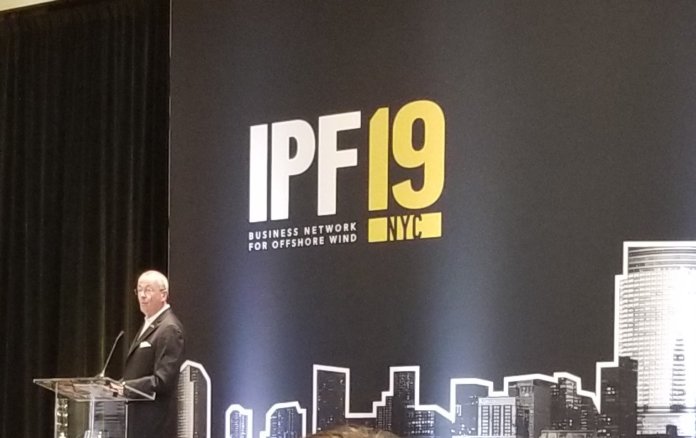This week at the Business Network for Offshore Wind’s International Partnering Forum (IPF), New Jersey Gov. Phil Murphy sounded off about the state’s vast offshore wind potential and delivered a concrete message to the New York crowd: New Jersey is open for business.
“We’re putting together everything the offshore wind industry will need,” Murphy told attendees.
A big part of the equation, he explained, is the political will and forward-looking policy that was sorely lacking during predecessor Gov. Chris Christie’s administration. During his first year in office, Christie signed the state’s Offshore Wind Economic Development Act (OWEDA), but little progress followed that move. The period of 2010-2018, Murphy said, represents “lost time” that needs to be recovered on a path toward “capturing New Jersey’s moment” in the offshore wind vertical.
Indeed, Murphy attended last year’s IPF, and at that time, he noted that the state’s commitment to the nascent industry was strong. In January 2018, the governor signed Executive Order No. 8, which put teeth behind OWEDA: New Jersey’s state agencies would facilitate the creation of 3.5 GW of offshore wind power by 2030. Backing that initiative is a $100 million tax incentive program.
At this year’s IPF, the state’s commitment appears to be even stronger. Under the Murphy administration, New Jersey has rejoined the Regional Greenhouse Gas Initiative (RGGI), jumped on board the U.S. Climate Alliance and nailed down an aggressive renewable portfolio standard (50% by 2030).
“Central to this plan is offshore wind,” he said.
The proof is in the pudding. In December 2018, the New Jersey Board of Public Utilities wrapped up a 1.1 GW solicitation for offshore wind projects, and the agency has said it will begin approving projects this summer. Two more solicitations – one next year and another in 2022 – will each call for an additional 1.2 GW.
“The opportunities are there – and the interest in participating in those opportunities is there,” he told attendees.
On top of pushing solid policy supporting offshore wind in “one of the world’s most advantageous wind zones,” Murphy said his administration has also put in motion a number of plans to attract business and develop a highly capable workforce. For instance, the state is partnering with its colleges and universities to create cleantech curricula and promote research and development. Also, the administration recently enacted incentives to pull companies back into urban centers and grow businesses inside New Jersey.
Additionally, Murphy announced during IPF the creation of the New Jersey Offshore Wind Supply Chain Registry. This online portal will enable companies interested in participating in the state’s offshore wind market to register their details and search for partners that can help get projects rolling.
Publicly available on the New Jersey Economic Development Authority (NJEDA) site, the governor said the registry will create a much-needed “two-way street,” whereby market participants in all niches of the offshore wind industry can find partners, as well as be found.
Murphy noted that NJEDA is shooting to have 650 companies signed up on the registry this year.
“Our goal is to do good – and to do well,” he remarked.




